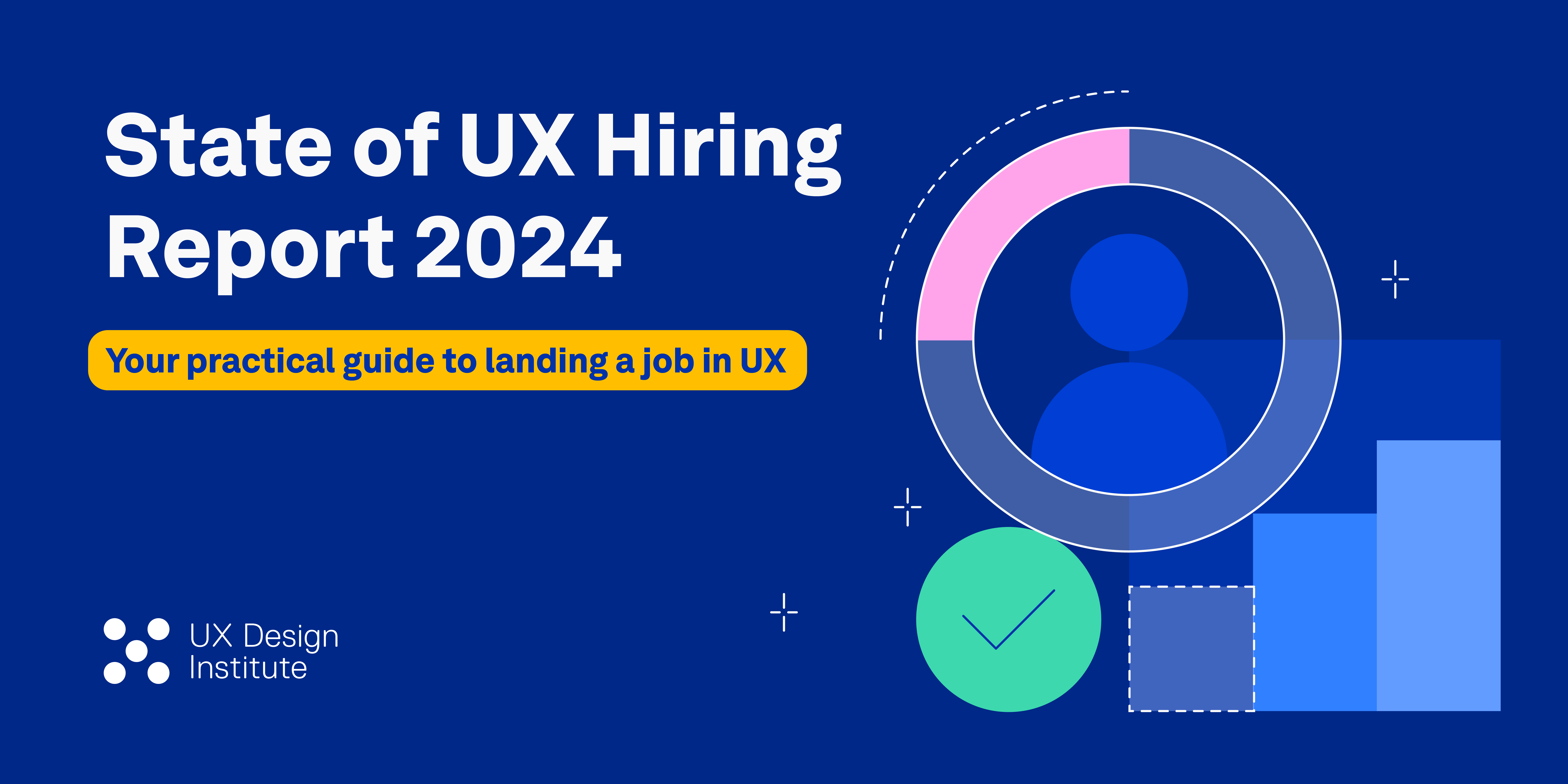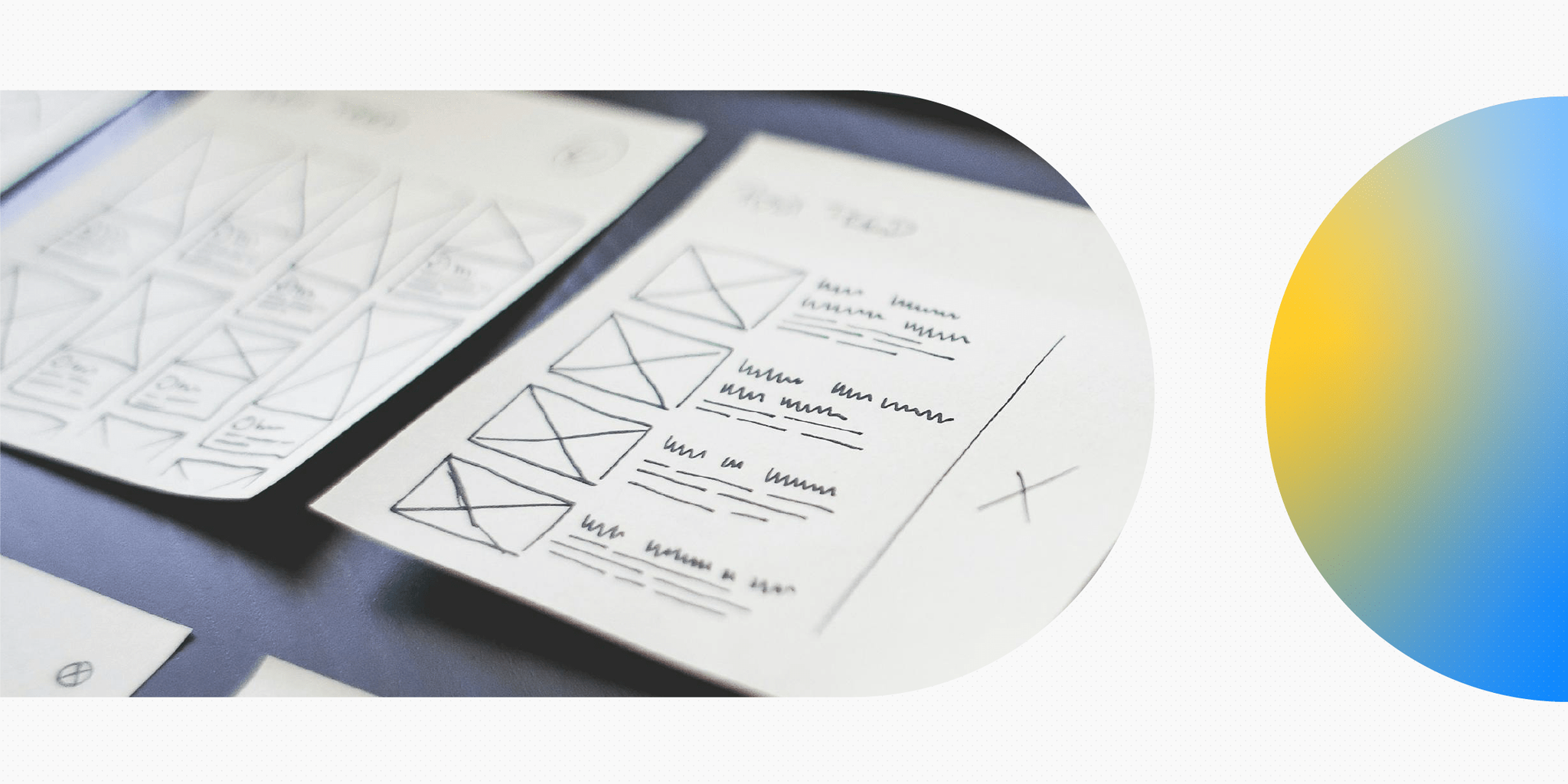Our State of UX Hiring Report 2024 is out now. Discover key findings from the report, plus practical career advice from UX industry leaders on landing UX jobs.
User experience (UX) is one of those rare disciplines that spans psychology, technology, and design—making it an exciting and rewarding field to work in.
And, as more and more businesses invest heavily in digitalisation, design and user experience are seen as top-priority skills. As such, demand for qualified UX professionals is on the rise.
Unsurprisingly, UX continues to be a highly popular career choice. But, as the industry evolves and becomes increasingly specialised, it’s also growing more competitive. At the same time, the emergence of AI has generated mixed feelings, bringing with it both excitement about new opportunities and uncertainty about job security.
If you want to forge a successful UX career in 2024 and beyond, you need to cut through the noise and truly understand the reality of the industry—as well as where it’s headed in the future.
Dive into our State of UX Hiring Report 2024: your practical guide to all things UX jobs including how to land one, backed by the latest industry insights and expert advice from UX leaders.
About the report
We surveyed over 500 UX professionals (537 to be exact)—including both recent hires (people who got their first UX role in the last four years) and those responsible for UX hiring—to gather first-hand insights into the industry.
Drawing on the expertise and perspectives of those directly within the field, the State of UX Hiring Report 2024 delves into key trends shaping the UX hiring landscape, reveals hiring predictions for 2024, and provides valuable insight into how the demand for UX professionals is expected to take shape in the longer term.
Besides unpacking market demand and data-backed hiring trends, the report offers practical advice on how to break into the UX industry—enriched with expert commentary from top UX leaders across a range of industries and locations. Learn about the skills, qualifications, and professional backgrounds that hiring managers value most, and uncover what really matters when building a professional UX portfolio.
The report also explores what it’s like to work in the industry, looking at career and salary satisfaction amongst UX professionals, as well as how they feel about the future—and, in particular, the role that AI will play.
In this post, we highlight six of the most compelling insights from the report. For the full picture, download the State of UX Hiring Report 2024 (it’s free!).
The State of UX Hiring Report 2024: key insights
Key insight #1: Demand for UX skills is expected to increase in the next 1-2 years
One of the most pressing topics for aspiring UX designers is industry demand. Before you retrain, you want to be confident that your new skills will be sought-after and that you’ll have a good chance of getting hired.
Amidst the backdrop of layoffs within BigTech in 2023 and early 2024, we recognise the urgency of this inquiry. To provide clarity, we asked our survey participants whether they believe demand for UX skills at their company will increase, decrease, or stay the same in the next 1-2 years
Well, good news – their responses paint an optimistic picture.
68% of those responsible for hiring expect demand for UX skills at their company/organisation to increase over the next 1-2 years.
Of that 68%, 20% expect the demand for UX skills to increase significantly, while 48% expect the demand to increase somewhat.
Ronan Costello, Director of Experience Design at Analog Devices, elaborates:
Demand remains strong for UX skill sets, and with the emergence of new technologies like GenAI, this demand is set to continue. UX design and research will continue to play a central role as our physical and virtual worlds become increasingly intertwined.
Download the full report for further hiring insights, including:
- The specific UX roles that hiring managers are planning to recruit for in 2024
- How long it takes on average for entry-level candidates to land their first UX job
- The % of hiring managers who are willing to consider entry-level candidates without any prior experience in UX
Key insight #2: A professional portfolio is crucial for landing your first UX job
If you’re a UX newcomer, you may question whether you really need a UX portfolio to land your first job. The answer is a resounding yes: a professional portfolio is crucial for demonstrating your skills and putting forward an impressive application.
In our survey, 90% of those responsible for hiring said that an entry-level candidate’s portfolio is important to them when evaluating job applications.
Of that 90%, 32% said a portfolio is very important. 31% deemed it important, while 27% deemed it somewhat important.
As Mitchell Clements, Senior Product Design Manager at nCino, explains:
In the current hiring market, portfolios are no longer a ‘nice to have’. They’ve become a ‘must have’. My recommendation to designers is instead of showing all of your work, focus on showing your best work.
In short: you absolutely need a professional UX portfolio, but you don’t need tons of case studies. Focus on quality rather than quantity, choosing two or three projects that best highlight your skills.
Learn more about the importance of a UX portfolio, what hiring managers look for, how many case studies you really need, and how to effectively showcase your skills, projects, and problem-solving abilities in the full State of UX Hiring Report 2024.
Key insight #3: The majority of hiring managers look for a UX-specific qualification when hiring entry-level candidates
There’s plenty of debate in the industry about UX education and, more specifically, whether a UX course can really turn out job-ready candidates. For aspiring designers, navigating the many different training options can be incredibly difficult.
Do you need a degree? What kind of qualification can help set you apart and make sure that hiring managers take you seriously?
We asked those responsible for UX hiring what kind of education they look for when sourcing entry-level candidates, both in terms of general education and UX-specific training.
77% of hiring managers would look for a UX-specific qualification when hiring entry-level candidates.
Of those, 52% would look for a certificate or diploma in UX, while 23% would look for a Bachelor’s degree in UX. Just 2% would look for a Master’s degree (or higher) in UX.
On the value of formal UX training, Stephen Kennedy, Head of UX at Etihad Airways, explains:
Formal education equips candidates with in-depth knowledge of the full UX process, making them well-rounded, valuable professionals. I prioritise candidates with this background as they offer a more holistic design perspective.
So, if you’ve been on the fence about whether to enrol in a UX course, you can be confident that it’s a worthwhile investment (just make sure you’re studying with a reputable provider like the UX Design Institute).
Key insight #4: The majority of UX professionals are career-changers (and transferable skills play a critical role in landing your first job)
If you’ve ever wondered whether it’s truly possible to switch careers and get hired as a UX designer, wonder no more. The industry is largely made up of career-changers from all different professional backgrounds.
Of our 537 UX professionals, 76% transitioned to UX from another career path. Our survey respondents had previous careers as lumberjacks, nurses, actors, and jewellery-makers besides graphic designers, architects, marketing professionals —to name just a few.
And, if you do want to make the switch, transferable skills are your superpower. When we asked hiring managers what skills they believe are most important for landing a job in UX, soft skills came out on top.
Emphasising the significance of transferable soft skills, Eoghain Cooper, Career Advisor at UX Design Institute says,
People come to UX from careers in a range of different disciplines and industries. Transferable skills are valued by hiring managers, especially when you can demonstrate their relevance to the role.
Problem-solving is the number one skill that hiring managers look for when filling entry-level UX roles, followed by empathy and teamwork and collaboration.
For the complete list of skills and qualities that UX hiring managers prioritise, download the full State of UX Hiring Report.
Key insight #5: 92% of UX professionals are satisfied with their career
UX is often hailed as a meaningful and rewarding career path that allows you to make a tangible impact on the world. But what’s the day-to-day reality?
We wanted to shed some light on what it’s really like to work in UX and hear first-hand from those in the field if it’s as fulfilling as it’s made out to be.
Well, it turns out that the rumours are true. 92% of the UX professionals we surveyed are satisfied with their careers.
Of those, 32% are very satisfied, 41% are satisfied, and 19% are somewhat satisfied.
Brian Herron, Principal Designer at Each&Other, offers further insight into why UX continues to be such a fulfilling career path:
The data clearly shows that UX remains a rewarding discipline, consistently providing practitioners with high levels of personal and professional fulfilment. In our field of work, this signifies that UX professionals continue to find compelling user problems to solve, meaningful challenges to address, and abundant opportunities to create an impact through good design.
We’ve highlighted just one key data point regarding UX career satisfaction. In the full report, you’ll find further insights into career and salary satisfaction among UX professionals, including how they feel about their future in the industry.
Key insight #6: Most UX professionals are more excited than concerned about AI
Ever since generative AI came onto the scene, there’s been one question on everybody’s lips: will AI replace UX designers? The short answer is no—but AI is changing how UX designers work.
But, with all the hype surrounding the rise of AI, it’s important to separate fact from fiction. For the final part of our survey, we explored how UX professionals are actually using AI in their day-to-day work, and how they feel about it.
So: AI for UX designers—friend or foe?
Interestingly, 53% of all UX professionals surveyed are more excited than concerned about AI.
Of those, 22% are much more excited than concerned, while 31% are somewhat more excited than concerned. A further 33% are excited and concerned in equal measure, meaning that just 14% report feeling more concerned than excited.
Piyush Arora, Senior Interaction Designer, AI at Google , emphasises the role of AI as an assistive tool:
AI can be a fantastic collaborator as a personal digital assistant. There is huge potential for AI in research analysis, content generation, design-to-code prototypes, accessibility, and more. I believe AI’s ability to contribute positively to UX and other professions will only grow over time.
Head to the full report for more expert insights and a behind-the-scenes look at how UX professionals are leveraging AI to streamline and improve their work.
From insights to action: Get practical advice from industry leaders all about UX jobs
Our State of UX Hiring Report 2024 highlights many fascinating insights into what’s driving the industry at present, where it’s headed in the future, and what it all means for aspiring UX professionals.
Equipped with these insights and expert advice from top industry leaders, you can position yourself as a strong UX candidate and navigate the job market with confidence.
Are you ready to turn our insights into action? Read the full report to discover our 10 actionable recommendations for aspiring UX professionals, including:
- Best practices for networking and finding a job
- Where to find UX opportunities beyond the traditional tech sector
- How to embrace your non-UX-related experience
- The most important hard skills to master
- The most effective way to learn UX and compete in the job market
The takeaway
If there’s one thing we can take away from our State of UX Hiring Report 2024, it’s that there’s plenty to feel positive about within the UX industry.
The majority of hiring managers expect demand for UX skills to increase in the next few years, and newcomers to the field aren’t expected to have a ton of UX-related experience. UX is an industry of career-changers, and hiring managers prioritise transferable soft skills when hiring entry-level candidates.
Equally important for landing a UX job is a strong professional portfolio that showcases your best work and practical understanding, and a UX-specific qualification from a reputable provider.
Now is a great time to learn in-demand UX skills and make your mark on this thriving industry.
Sarah Fox, Staff Product Designer at Etsy, says it best:
This is an interesting time to work in UX, and I’m optimistic about the future. Tech is changing and evolving with the emergence of AI. If we can stay curious and adapt to the evolving landscape, we will be well-positioned to create impactful and meaningful user experiences. The future is exciting and full of opportunities for those who are willing to embrace this change.
Are you ready to embrace all the exciting opportunities the industry has to offer? Then download the full State of UX Hiring Report 2024 and unlock all the latest insights, tips, and guidance you need to start your UX career.





